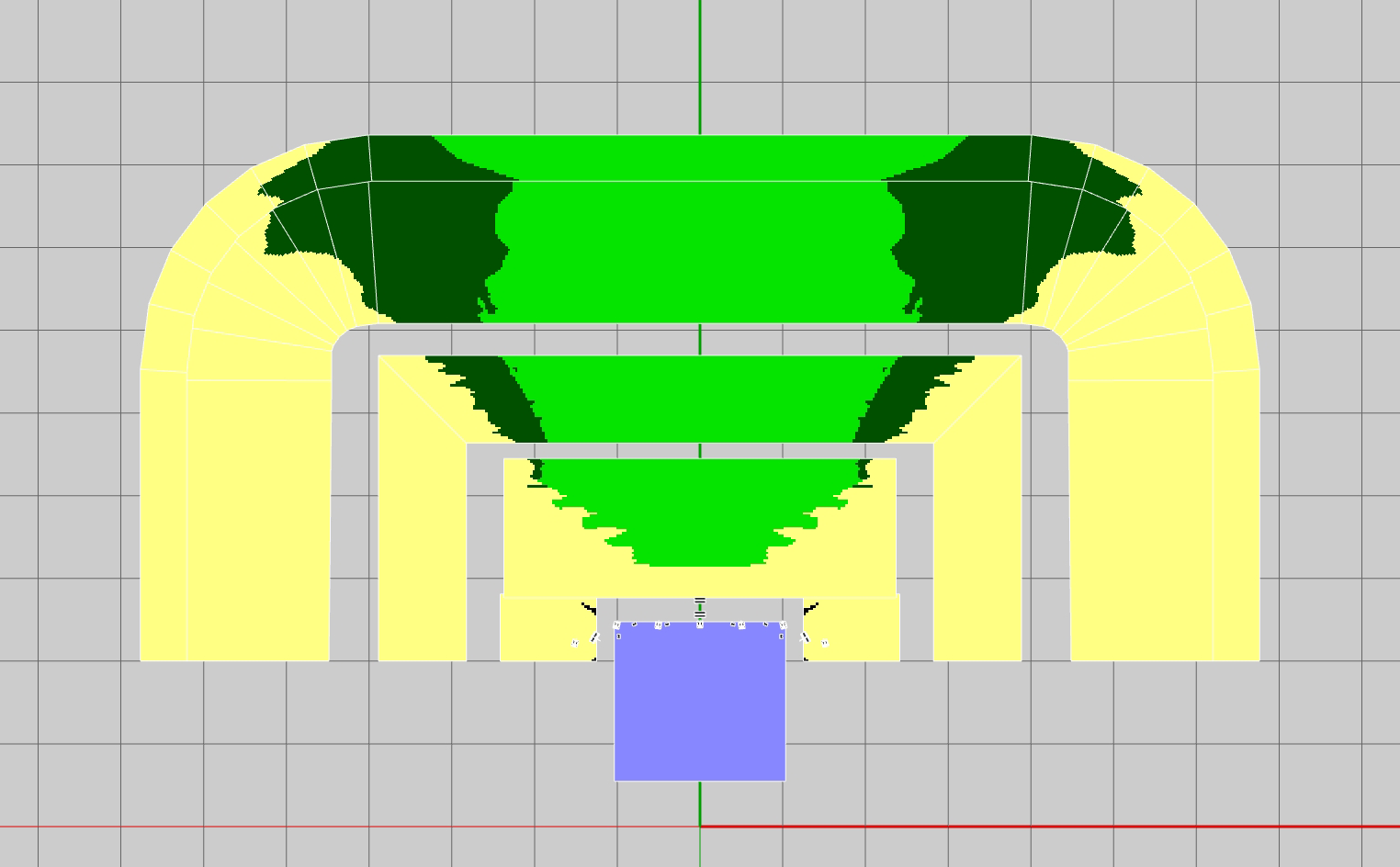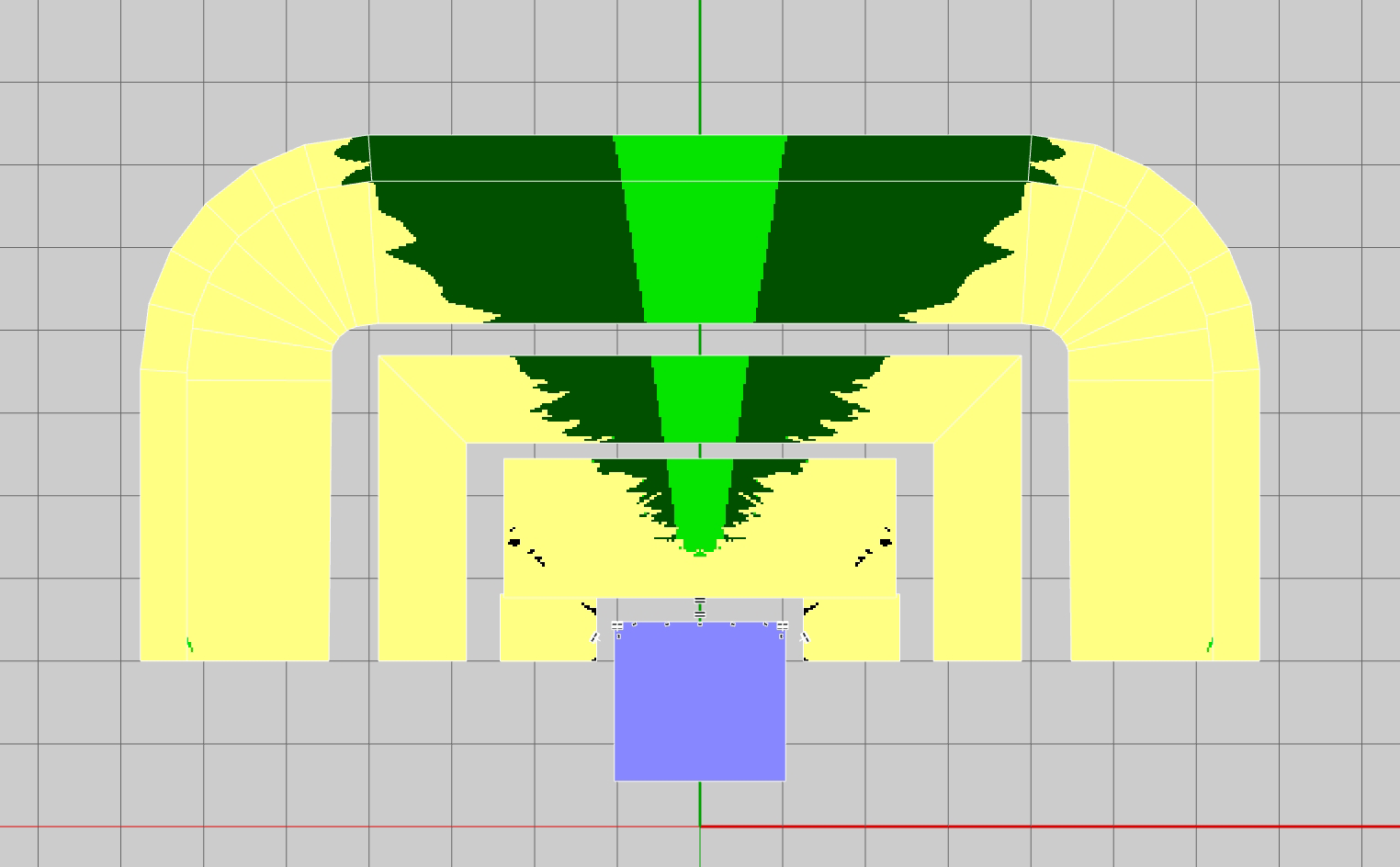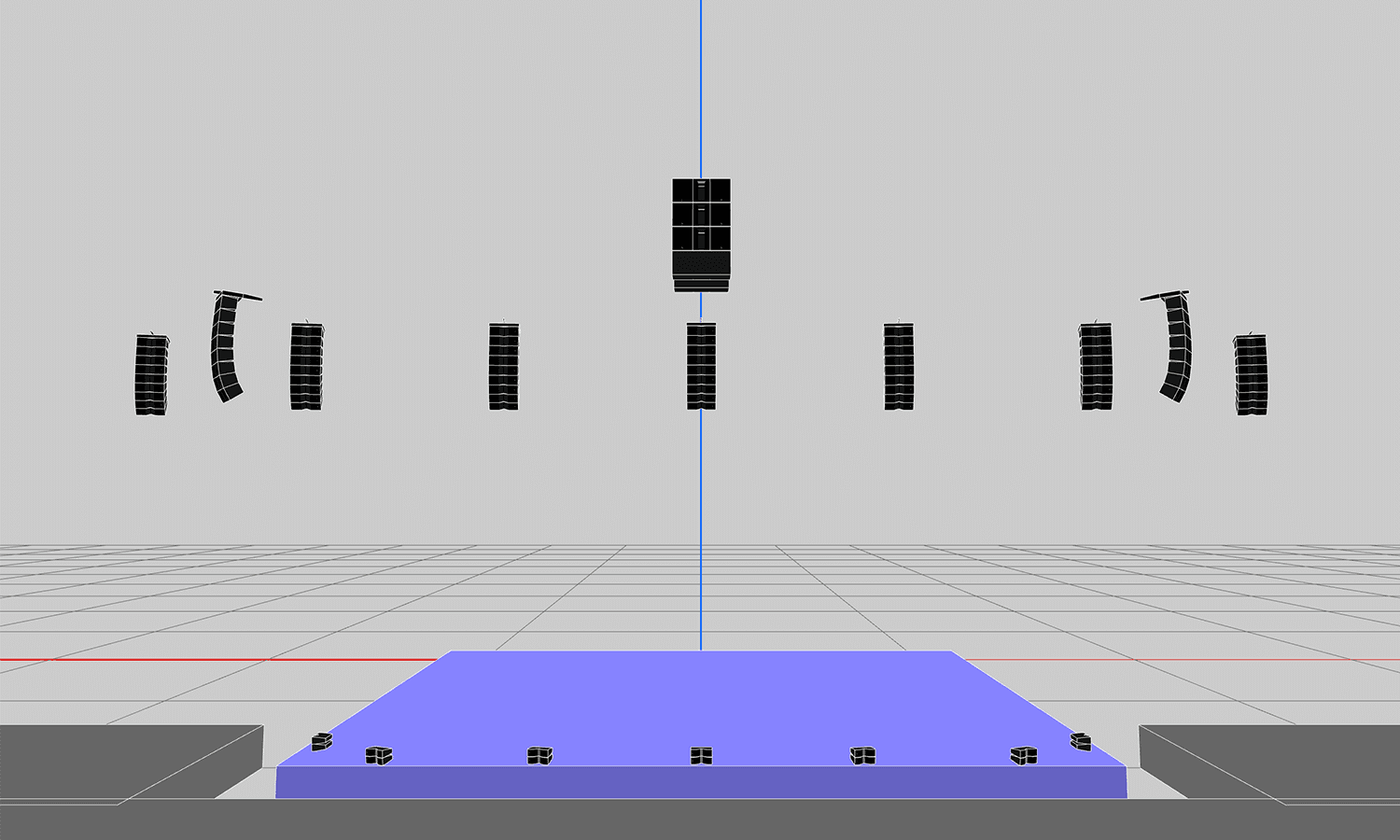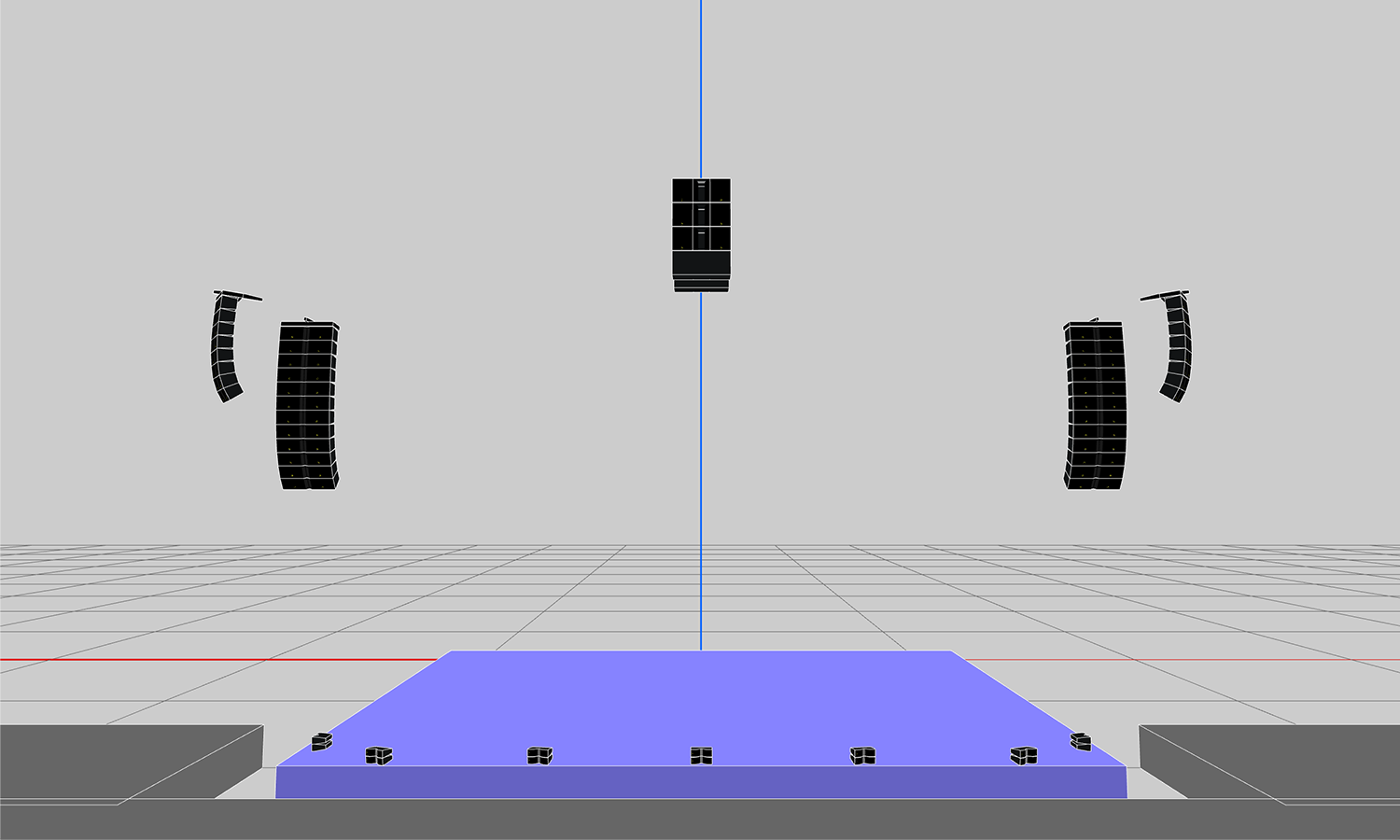Project Description
The project is to reinforce a symphonic orchestra of 100 musicians plus choir in an indoor stadium.
Sound Design Solution
A classic design would use a left-right configuration of 12 K2 per side plus out-fills, front-fills and subs.
The L‑ISA design solution consists of a scene system made of seven speaker groups, equally spaced above the performing zone. The total width of the system expands the size of the orchestra by 40% to sonically create a larger than live orchestra, still respecting accurate localization.
Story
After two editions which gathered more than 30,000 spectators, the Orchestre National de Lille and maestro Jean-Claude Casadesus returned to the Stade Pierre-Mauroy for a 3rd edition on Wednesday 12 July 2017.
Nearly 300 artists (the musicians of the Lille National Orchestra, the singers of the Nord-Pas-de-Calais regional choir and the Nicolas de Grigny-Reims choir, 4 international singers) led by maestro Jean-Claude Casadesus for a masterly work: Verdi’s Requiem.
For this edition the technical team of the ONL wished to enhance the sonic experience and contacted the L‑ISA team to support this show.
This great collaborative work from pre-mixing to sound design led to a highly successful event where every spectator enjoyed the Verdi’s Requiem masterpiece with an enveloping, natural yet very detailed sound like they had never heard before.
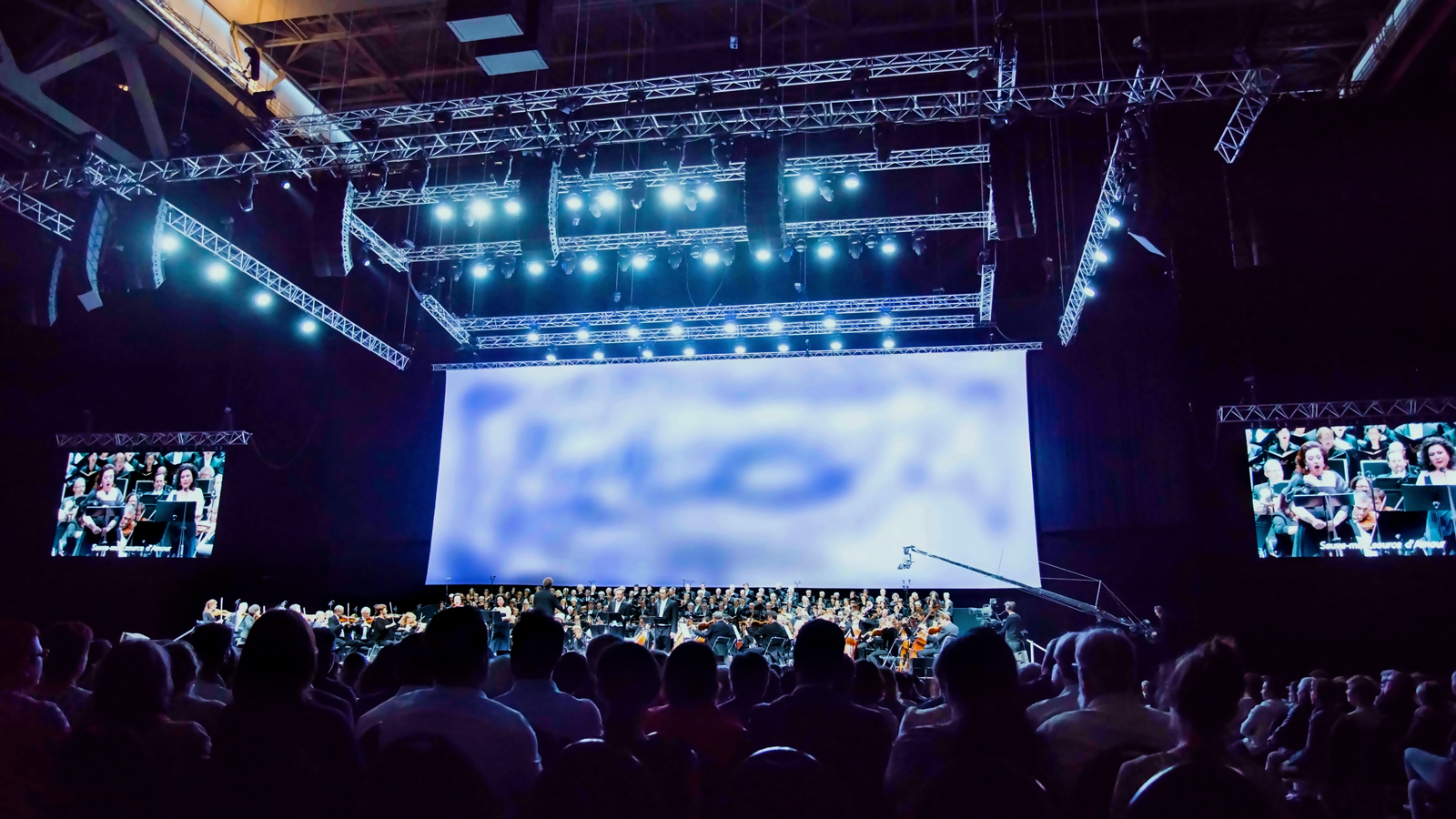
We found the L‑ISA controller very simple to use, the interface is intuitive and very functional. Once the sources are placed in their space, the mixing is fairly conventional and any adjustments within the software during the concert were quick and easy.
The greatest compliment that I could receive would be for someone to ask me after a concert if there was any sound reinforcement. Given the results we obtained at the Stade, I’m convinced that in a more traditional environment, the audience wouldn’t know that there was any sound reinforcement at all.
Francois Gabert, Engineer

